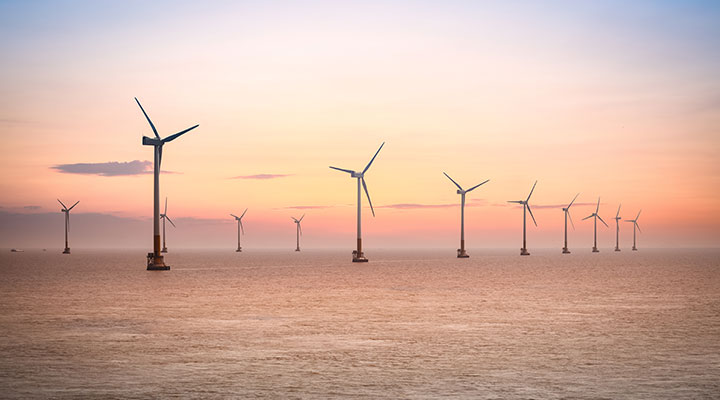
Missing the energy transition boat again
Published Date : 2024-October-27, Sunday
There was one glaring omission in the energy policy announcements made by the Australian federal government this month.
Released in two tranches, the new measures covered a lot of ground including a Technology Investment Roadmap to lower greenhouse gas emissions, generation reliability and security, and the role gas will play in a recovering economy post-COVID.
More specifically, the government prioritised funding and incentives for several technologies such as hydrogen, long duration energy storage, low carbon materials, low emissions steel and aluminium, carbon capture and storage and soil carbon.
Gas was picked as the generation fuel of choice for so-called “dispatchable” energy to replace the Liddell coal-fired power station before it closes down in 2023.
While both men praised the role renewable energy overall had played in lowering electricity prices, not once in thousands of words in news releases and speeches did Prime Minister Scott Morrison or Minister for Energy and Emissions Reduction Angus Taylor mention a critical technology type that is booming around the world; offshore wind power.
Sure offshore wind is not a new technology – the first turbine was installed in Sweden in 1990 – but it is in Australia, and by including hydrogen and carbon capture & storage in the Technology Investment Roadmap the government wasn’t just looking towards new technologies either.
Although the necessity for offshore wind farms is not, on face value, as pressing in Australia as it is in more densely populated countries such as parts of Europe and Asia, there are a number of feasible potential locations around our coastline. Given that 85% of Australia’s population lives within 50km of the coastline, and the transmission system is built to accommodate coal-fired generation (also proximate to the coastline), offshore wind should be a very obvious play for Australia.
Developments are being planned at three of these locations; the Star of the South project off the south coast of Gippsland in Victoria, the newly announced Mid West Wind and Solar Project on the mid-west region coast of Western Australia near Geraldton, and offshore Newcastle in New South Wales which is yet to be publicly announced.
Of these Star of the South is by far the most mature with the Australian founders (operating as Offshore Energy) introducing large international investment in 2017 (from offshore wind leaders, Copenhagen Infrastructure Partners) and starting extensive preliminary feasibility studies from late 2017 for a project with a capacity of at least 2000MW connected via 95km of undersea and underground high voltage transmission cables to a connection point on the Victorian grid in the Latrobe Valley.
The Mid West Wind and Solar Project, announced in early September by Australian Stock Exchange-listed Pilot Energy, includes a conceptual design for up to 1.1 GW of offshore wind power generation comprised of up to 78 X 14 MW wind turbines. A detailed feasibility study is underway.
Around the world the offshore wind market is going through the roof. A report released in August by the Global Wind Energy Council (GWEC) found that 6.1 GW of new capacity was built in 2019 – the best year ever for the global offshore wind industry – with 6.6 GW forecast to be installed in 2020 despite the economic impacts of the COVID-19 crisis. Incredibly, GWEC predicts offshore wind capacity will surge to over 234 GW by 2030 from 29.1 GW at the end of 2019, led by the Asia-Pacific region.
Offshore wind worldwide installation
With the promise of the creation of a new industry bringing with it thousands of jobs, the ability to utilise existing offshore skills and help the inevitable transition from fossil fuels you’d think the federal government would be 100% behind offshore wind.
However it is dragging its feet. Although Offshore Energy was granted in March 2019 an exploration licence allowing it to undertake technical and environmental studies for the Star of the South project, there is no legislative framework to allow for the development and operation of offshore wind farms in Australia.
An Offshore clean energy infrastructure regulatory framework discussion paper was released by the federal Department of Industry Science Energy & Resources in January 2020, with information sessions held that month in Perth and Melbourne. Public feedback about the discussion paper closed on 20 February 2020.
Publicly, federal government ministers have confirmed when asked – without offering much detail – that the legislation is making progress. Most recently Darren Chester, who is the federal member for Gippsland and a front bench minister, said that he’d have to follow up on a question asked on a television program about the legislation. Star of the South would create thousands of jobs and attract billions of dollars of investment to this cabinet member’s electorate but he couldn’t provide any information about where the enabling legislation was at.
And if ever there was an opportunity to announce the federal government’s support of this job-creating, skills-rich, transformational new industry it would have been as part of the Technology Investment Roadmap. Australia is missing the energy transition boat again.
Paul Sullivan
AltEnergy (www.altenergy.com.au)

